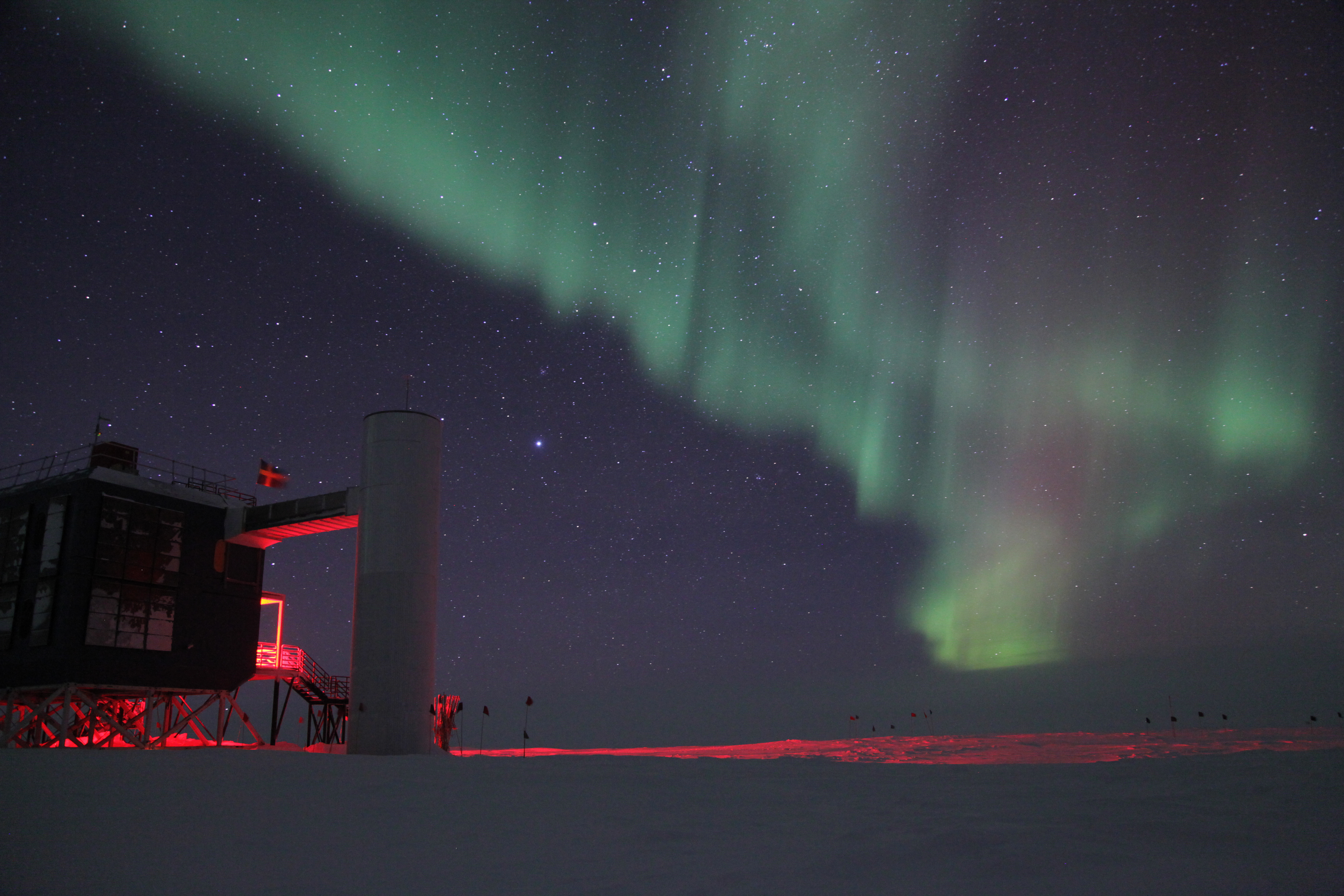
Update, July 12: During the news conference, researchers announced that they had traced a high-energy cosmic neutrino to its faraway source, a jet-blasting active galaxy. The first-of-its-kind discovery also nailed down an origin for at least some of the fastest-moving cosmic rays, solving a mystery that has puzzled astronomers for more than a century. [Full story: High-Energy 'Ghost Particle' Traced to Distant Galaxy in Astronomy Breakthrough]
An international team of astrophysicists will reveal a "breakthrough" discovery Thursday (July 12), and you can watch the announcement live.
The U.S. National Science Foundation (NSF) announced in a statement that it will host a news conference Thursday at 11 a.m. EDT (1500 GMT) to unveil new "multimessenger astrophysics findings" led by the IceCube Neutrino Observatory, an NSF-managed facility at the South Pole. You can watch the briefing live here at Space.com, courtesy of the NSF, or directly via the NSF's YouTube channel.
NSF officials did not reveal what the discovery will be, but did list details on the scientists that will appear in Thursday's press conference. Foundation director France Córdova will moderate the panel discussion, which will also feature:
- Francis Halzen, IceCube principal investigator, University of Wisconsin-Madison;
- Regina Caputo, analysis coordinator for the Fermi Gamma-ray Space Telescope's Large Area Telescope instrument, University of Maryland/NASA Goddard Space Flight Center;
- Razmik Mirzoyan, spokesperson for the Major Atmospheric Gamma Imaging Cherenkov Telescopes, Max Planck Institute for Physics;
- Olga Botner, former IceCube spokesperson, Uppsala University.
Neutrinos are neutral particles that interact very weakly with other types of matter; many trillions of them stream unimpeded through Earth every second. Detecting them is therefore a challenge — one that the IceCube Neutrino Observatory has undertaken.
The facility consists of 86 cables, each of which extends 1.5 miles (2.5 kilometers) into the Antarctic ice. Each cable holds 60 "digital optical modules," which themselves harbor supersensitive light detectors designed to pick up emissions sparked by rare interactions between neutrinos and water-ice molecules.
"Multimessenger astrophysics" refers to the use of two or more different types of signals to observe a cosmic object or phenomenon. Last October, for example, researchers announced that they had studied a collision between two neutron stars by analyzing both the electromagnetic radiation and gravitational waves thrown off by the landmark event.
Get the Space.com Newsletter
Breaking space news, the latest updates on rocket launches, skywatching events and more!
So what do you think the IceCube Neutrino Observatory has found? We'll have to tune in Thursday to know for sure.
Visit Space.com Thursday for complete coverage of the IceCube Neutrino Observatory discovery announcement.
Follow Mike Wall on Twitter @michaeldwall and Google+. Follow us @Spacedotcom, Facebook or Google+. Originally published on Space.com.
Join our Space Forums to keep talking space on the latest missions, night sky and more! And if you have a news tip, correction or comment, let us know at: community@space.com.

Michael Wall is a Senior Space Writer with Space.com and joined the team in 2010. He primarily covers exoplanets, spaceflight and military space, but has been known to dabble in the space art beat. His book about the search for alien life, "Out There," was published on Nov. 13, 2018. Before becoming a science writer, Michael worked as a herpetologist and wildlife biologist. He has a Ph.D. in evolutionary biology from the University of Sydney, Australia, a bachelor's degree from the University of Arizona, and a graduate certificate in science writing from the University of California, Santa Cruz. To find out what his latest project is, you can follow Michael on Twitter.









